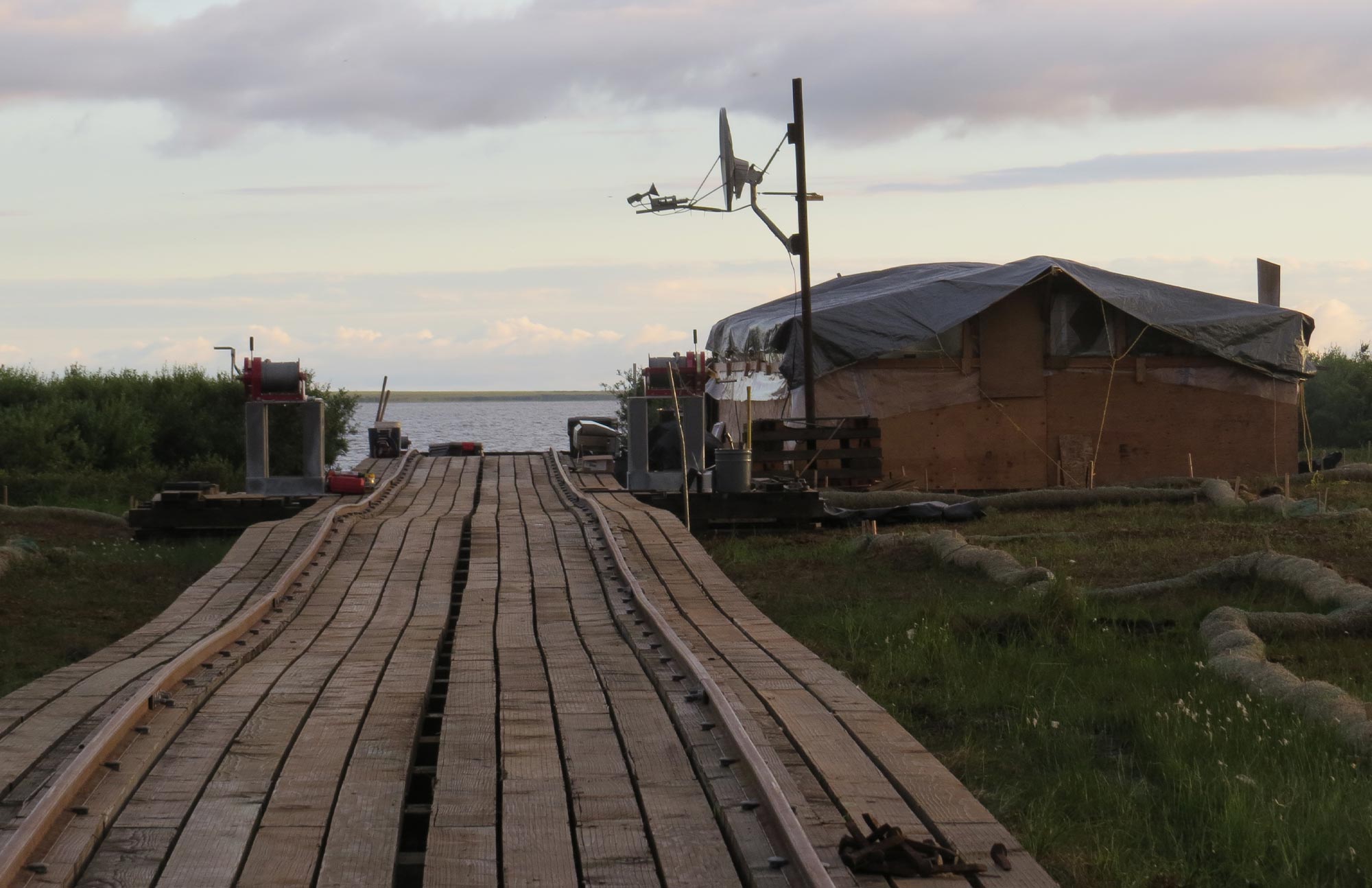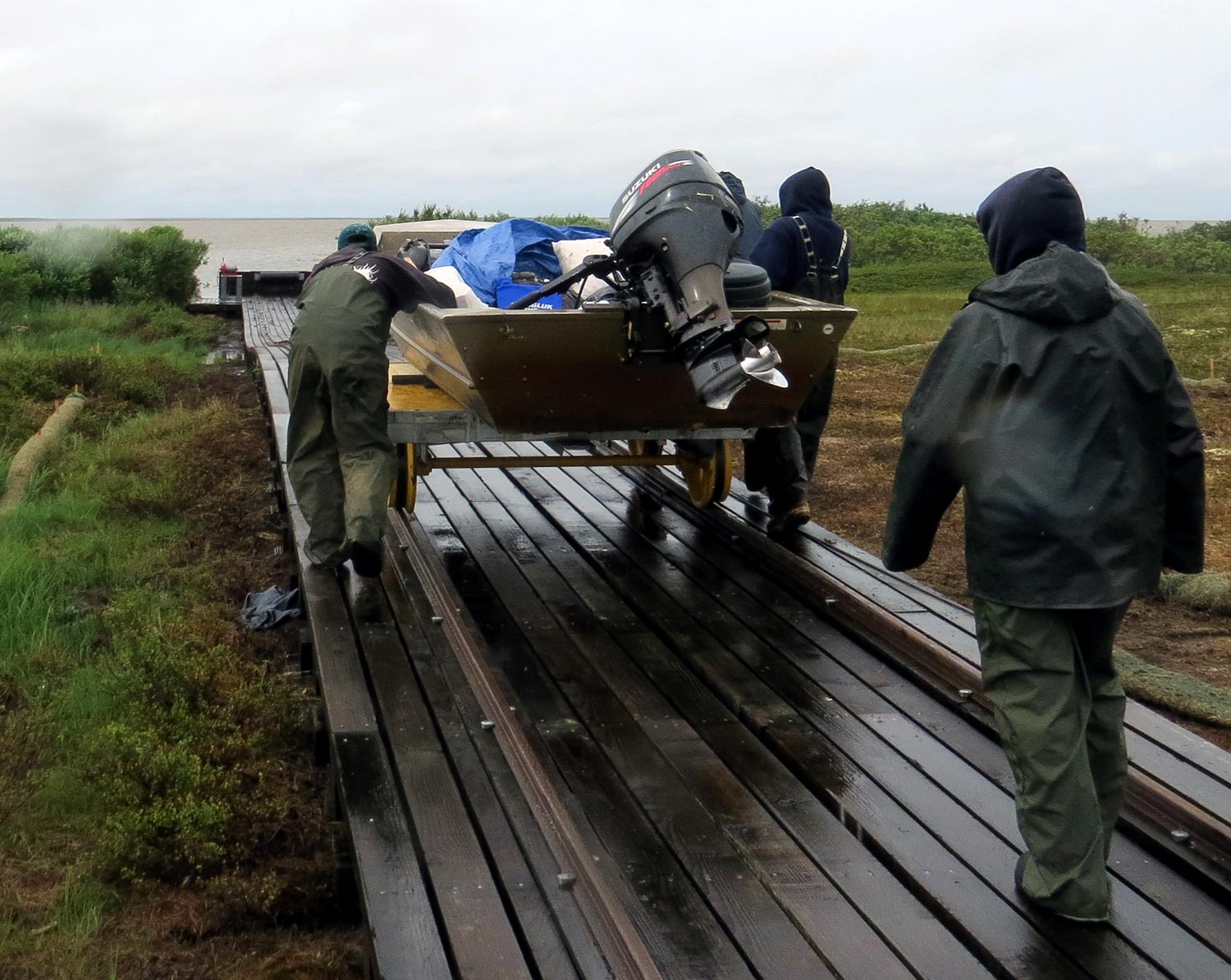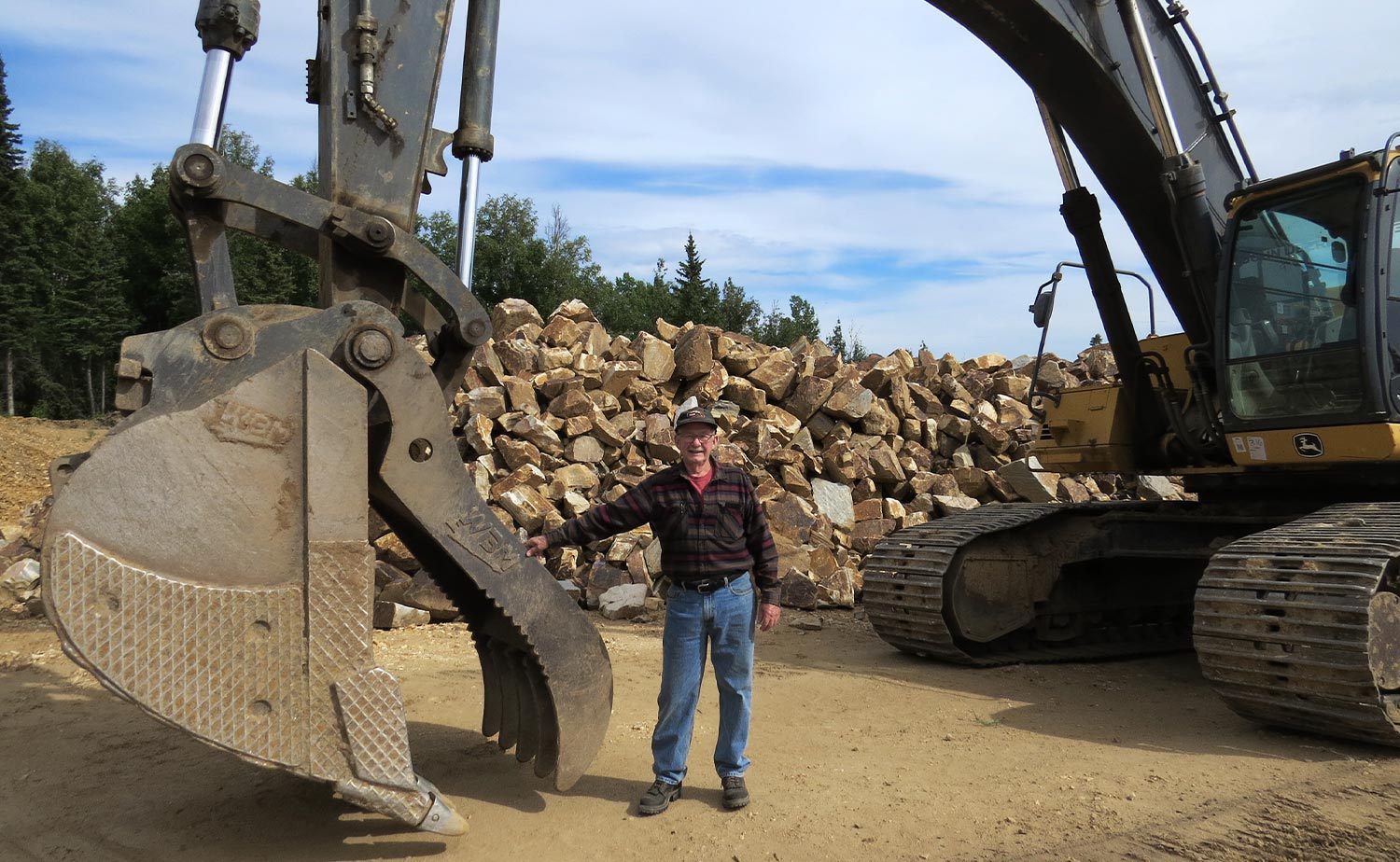


Carpenter Contracting set up this camp while working on the Tevyar’aq Railway Tram in 2013.
f you live in Alaska, chances are you’ve stood on something Wayne Carpenter built. His Delta Junction-based Carpenter Contracting, Inc. has—among its many jobs—worked on the missile defense facility at Fort Greely, built the Dot Lake washeteria, revamped part of a veterans’ center in Anchorage, removed asbestos from Eielson Air Force Base, built a wayside at Chitina, constructed the Birch Lake campground, and remodeled part of the Alaska Vocational Technical Center kitchen in Seward.
Carpenter’s work ethic and insistence on building things to last has taken him from Alaska’s largest city to its smallest villages.
“We went from right-of-way clearing and slowly worked into the building trades,” he says. “We do heavy construction, dirt work, and a wide variety of projects.”
Like many in his generation of Alaskans, Carpenter came north in the mid-‘70s to work on the pipeline. Originally from northeastern Washington state, he grew up on a farm where working hard outdoors was a way of life, so he quickly found Alaska to his liking. With his pipeline wages he purchased an agricultural homestead in Delta Junction, bought some equipment, and cleared the land himself. Soon neighbors were requesting his assistance with similar projects, and by 1983 he had a contractor’s license and was busy moving dirt around the Interior.

The new Tununak boardwalk, which Carpenter Contracting built in 2015 to replace a previous boardwalk that had fallen into disrepair.

A longtime member of Laborers’ Union Local 942 in Fairbanks—from which he recently retired—Carpenter’s knack for getting compaction right was his ticket to countless job sites.
“I found a niche where there was always a need for someone who really knew materials and could jump in the ditch and get good compaction underneath the foundation,” he says. “There was nothing glorified about it. It was just hard work.”
“The people on the Kuskokwim travel up the Johnson River with their boats, put them on this little railroad cart, go over this little sand dune, and dump into a lake that takes them to a river that dumps them into the Yukon drainage.”
“We had to go in thirty miles by boat,” Carpenter says. “We hired a couple of gentlemen from the village to help us haul material and had to build a small camp.”
The job took about a month and a half, and supplies had to be helicoptered in.
“The helicopter is $1,400 an hour, so you make sure you have all your i’s dotted and t’s crossed. You don’t waste a minute,” he says.
Carpenter replaced the boardwalk along the river in Tununak, located on Nelson Island in the Bering Sea, in 2015. The old boardwalk was in disrepair and storm surges were washing away riverbanks and imperiling structures.
“I hired fourteen guys in the village,” he says. “They made us all pick up our pace. We really had a fun time out there.”
Carpenter’s crew first rebuilt the riverbank to prevent further erosion. They opened a quarry nearby and brought in a crusher, then placed the riprap in the river bottom to build a firm base. Next, 600 wood pilings were driven into the river bottom at precise distances from each other. Atop these went the boardwalk, which is aesthetically pleasing and structurally solid.
Mitch King, project engineer with the Eastern Federal Lands Highway Division, worked with Carpenter on the Tununak project.

Speaking of the Tununak boardwalk, King says, “It wasn’t the best of conditions, but we made it pretty good because of Wayne.”
“We watched everything from the babies coming out in the spring to all the bears gone to sleep in the fall,” he recalls. “That was just amazing.”
Sometimes female bears and their cubs crowded into the job site for protection from males. Carpenter says one day he had the door open on his excavator when a sow came running in. She came right up to the excavator, he recalls, “and plops down on her rear end. Her huge head is like three feet from my feet. And she just rolls her head and looks at me with these big brown eyes.”

“We’re still just a small family operation,” he says. “Just me and my two boys and a mechanic and a couple of friends that come and help me.”
He’s now approaching retirement, but Carpenter says his company will be in good hands with his sons, who share his understanding that success comes down to building it right.
“We go out and do a project and try to do it to where it will be something that people will have for a long time.”